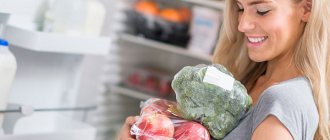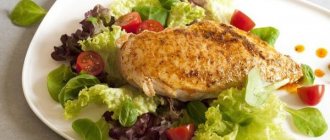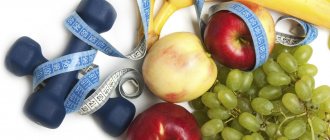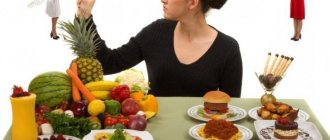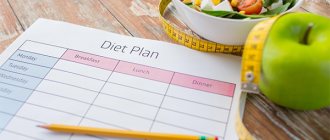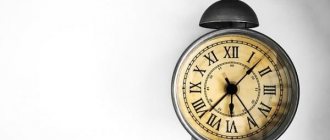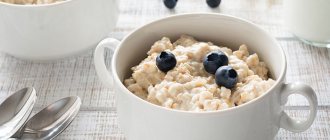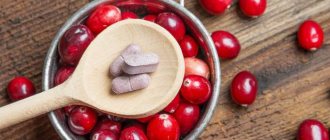Diet number 5: table
Diet No. 5 is a therapeutic nutrition system that is prescribed for certain problems with the gastrointestinal tract. It provides a balanced and equal amount of proteins and carbohydrates. Limits are set only when consuming fats.
The diet is aimed at prevention and maintenance of the general condition of the patient, but not at treatment. An experienced doctor prescribes “diet No. 5” along with medications.
Basic rules of table number five:
- eat small meals in equal portions five times a day;
- do not overeat or undereat: food must meet the body’s needs;
- the diet must contain the necessary vitamins and microelements;
- products for gallbladder disease should not contain a lot of cholesterol;
- give preference to dietary recipes;
- food should be moderately warm. Cold food can cause an attack of hepatic colic. The diet should contain a large amount of fiber: it reduces the lithogenicity of bile and improves intestinal motility.
shutterstock.com
Diet table 5 for cholecystitis
With the help of a diet, you can create rest for a damaged organ or enhance its activity, the contractile and motor function of the gallbladder, and the processes of bile secretion.
The nutritional regime during the acute period of the disease (acute cholecystitis or exacerbation of chronic cholecystitis) is based on maximum sparing of the entire digestive system. For this purpose, in the first days of illness, only fluid administration is recommended. Warm drinks are prescribed in small portions: weak tea, mineral water mixed with boiled water, sweet juices from fruits and berries diluted with water, rosehip decoction.
After 1-2 days, depending on the reduction in the severity of the pain syndrome, pureed food is prescribed in limited quantities: mucous and pureed soups (rice, semolina, oatmeal), pureed porridge (rice, oatmeal, semolina), jelly, jelly, sweet fruit mousse and berries Further, the diet includes low-fat cottage cheese, pureed, steamed lean meat, and low-fat boiled fish. White crackers are allowed. Food is given in small portions: 5-6 times a day.
If all acute phenomena disappear after 3-4 weeks, the patient can be transferred to diet No. 5. Therapeutic nutrition is combined with the prescription of antibacterial therapy, antispasmodics and bed rest.
shutterstock.com
Diet No. 5 for cholelithiasis
In case of exacerbation of cholelithiasis, more gentle nutritional regimens are prescribed, which provide for mechanical and thermal sparing of the liver and gall bladder. Food should not contain coarse fibers; fresh vegetables and fruits are excluded. Food is served pureed. Two methods of heat treatment of products are allowed: boiling and steaming.
Nutrition for cholelithiasis during an exacerbation and hepatic colic involves fasting for two days after the attack. Often cholelithiasis is an indication for surgery to remove the gallbladder, but even after surgery the disease can return.
A therapeutic diet reduces the risk of recurrence of cholelithiasis, and patients are recommended to follow the rules of table No. 5 throughout their lives.
shutterstock.com
Composition of diet 5
Water is especially important in the therapeutic diet for gallstone disease. The volume is at least 1.5-2 liters per day, which helps to dilute bile and reduce the concentration of cholesterol and bilirubin.
Diet number 5 after gallbladder removal
Diet rules after gallbladder removal.
The goal is to normalize bile secretion and digestion of food. To avoid the adverse consequences of the operation, it is necessary to adjust your food intake and diet.
- More frequent meals (4-5 times a day) reduce the load on the digestive system;
- A significant reduction in the intake of fatty foods after cholecystectomy prevents stomach spasms and the development of symptoms: bitterness in the mouth, nausea, discomfort in the right hypochondrium, pain in the hypochondrium;
- People with a gallbladder removed should eat mostly low-fat foods that are cooked without frying. Protein and plant foods, steamed and boiled or baked, form the basis of the diet of people who have undergone cholecystectomy. The rehabilitation of patients after cholecystectomy is based on these principles of therapeutic nutrition.
shutterstock.com
Is it possible and what kind of cheese to eat while losing weight?
This dietary product has a calming effect on the liver and strengthens the immune system. So you can not be afraid to prepare delicious desserts, snacks and sandwiches with Ricotta, but this does not apply to the saltier types: smoked and aged, they are salty. Mozzarella is a source of proteins, vitamins, and microelements that a person needs; it does not cause digestive problems and is useful at any age. The calorie content of mozzarella may be kcal, but low-fat varieties have different indicators.
For example, the energy value of low-fat mozzarella is calories. Therefore, it is worth adding it to various dishes without fear of gaining weight. What to eat in the evening to lose weight - options for the diet menu for dinner and allowed foods Diet nutrition: what foods you should eat to lose weight Is it possible to eat pasta while losing weight: benefits and recipes.
Is it possible to eat cheese on a diet?
The melted product is useful. It contains vitamins and minerals: zinc, copper, iron, sulfur, phosphorus, potassium, sodium, magnesium, saturated fatty acids. The average calorie content is kcal. You can reduce weight by 5 kg in 5 days, but there are contraindications for people who have problems with the gastrointestinal tract, liver disease, or are dependent on alcohol. A cheese diet will help you quickly lose weight. In a few days you can lose about three kilograms without harming your health. The main advantage of this protein diet is the very small amount of carbohydrates.
The body begins to consume internal carbohydrate reserves, which reduces adipose tissue. You need to eat unsalted and hard types every day. It is imperative to take multivitamins, since fruits and vegetables are excluded from the diet. Now this cheese is made from the milk of ordinary cows.
Since the cheese contains milk, which is not heat-treated, the product retains all the beneficial components. In addition, this cheese contains protein, fatty acids, and essential amino acids. Is it possible to eat cheese while losing weight? It is possible, however, you need to do it correctly.
Mozzarella should be consumed in small quantities. It is best to combine cheese with vegetables or herbs. You can also combine it with berries and fruits. But you shouldn’t combine mozzarella with meat, otherwise it will be difficult for the body to digest food.
What are the benefits of mozzarella? First of all, it contains many valuable substances. In addition, the calorie content of cheese ranges from up to kcal per g. This is a lot, but less than what is contained in many other cheeses. The protein contained in cheese is very useful.
Diet menu number 5
Table No. 5 - a balanced and most gentle diet. It is rich in proteins, but limits fatty foods and carbohydrates. This type of nutrition is indicated for exacerbations of diseases of the liver, gall bladder and biliary tract, as well as acute hepatitis, cholecystitis, gastric and intestinal diseases. It differs from diet No. 5 in its increased protein content (up to 150 g, of which 80-85% is of animal origin), foods rich in lipotropic factors, limited carbohydrates, and moderate fat content. All dishes are prepared in steamed, pureed, crushed form.
The composition of diet No. 5 is the same, restrictions apply to some products and methods of preparation. The following are added to the list of restrictions:
1. Eggs are limited to 0.5 yolks per day, only white omelettes are allowed. 2. Meat, poultry and fish can only be boiled or steamed in the form of cutlets, meatballs or souffle. You can also make aspic from fish. 3. Crumbly cereals, pearl barley and barley, millet, and pasta are excluded. 4. Raw vegetables can only be eaten in chopped form; hard fruits are excluded. 5. Avoid coffee.
Diet No. 5 is more restrictive than table No. 5. In addition to excluding a number of foods, the medical diet involves greater restriction of fats, salt and sugar. The acute phase of the disease requires more gentle nutrition. This diet, like any other, should be prescribed by a doctor based on test results and the patient’s diagnosis.
shutterstock.com
The benefits of cheese
The beneficial qualities of the product are due to its rich composition: milk fat, animal protein, calcium and potassium, vitamins and minerals. Cheese is perfectly absorbed by the body, and even its protein is much more harmless to the body than the same one made from whole milk.
This product quickly fills you up, and after eating 100 g of cheese, the feeling of hunger disappears. But we must not forget that it is a high-calorie product: 100 g contains 250 - 400 kcal. This variability is due to the fact that cheese is produced in different varieties, enriched with spices and enzymes, so when losing weight you need to be able to choose it wisely.
Allowed foods: what is allowed on diet number 5
- Bakery products: rye bread (yesterday baked), wheat bread (first and second grade), products made from soft dough filled with boiled meat (fish), with apples, cottage cheese, dry biscuit, cookies;
- Soups: milk soups with pasta, vegetable and cereal soups with vegetable broth, vegetarian borscht (shchi), fruit soup, beetroot soup. If you need to add flour to season soups, it is dried (not fried);
- Fish: lean fish, boiled, baked after boiling, fish dumplings and meatballs, soufflé;
- Meat (poultry): lean and low-fat meat, without tendons and connective tissue (fascia), skinless poultry, lean lamb and pork, beef, rabbit, turkey, chicken, boiled meat, baked after boiling - chopped and in one piece, dairy sausages, cabbage rolls, pilaf with boiled meat;
- Dairy products: milk, curdled milk, kefir, acidophilus, low-fat and half-fat cottage cheese, casseroles, puddings, lazy dumplings, sour cream (as an additive to dishes and seasoning), low-fat, mild cheese;
- Fats: refined vegetable oil, butter (in dishes and in its natural form);
shutterstock.com
- Cereals: various cereals, oatmeal and buckwheat are especially useful, pilaf with carrots, dried fruits, pudding with cottage cheese, carrots, boiled pasta, cereals;
- Eggs: baked white omelet, soft-boiled, one yolk per day;
- Vegetables: various - boiled, stewed or raw. As side dishes, independent dishes, salads, green peas (in the form of puree), sour cabbage (sauerkraut), onions after boiling;
- Appetizers: fruit salads, fresh vegetables, vinaigrettes, low-fat herring (soaked), squash caviar, salads from boiled fish, seafood, boiled meat, sausages - dietary, dairy and doctor's, low-fat, mild cheese, low-fat ham;
- Fruits, berries, sweets: baked, boiled and fresh (except for sour ones), compotes, jelly, dried fruits, mousses, jelly, marshmallows, marmalade, preserves, honey, non-chocolate candies; replace sugar with sorbitol, xylitol;
- Drinks: juices - vegetable, berries and fruits, coffee with milk, black, green tea, rosehip infusion, wheat bran infusion;
- Sauces (spices): sweet fruit dressings, cinnamon, vanillin, parsley, dill, sauces - sour cream, vegetable, milk (flour is dried);
Prohibited foods: what is not allowed on diet number 5
- Bakery products: fried pies, butter and puff pastry products, fresh bread;
- Soups: mushroom, meat, fish broths, green cabbage soup, okroshka;
- Fish: canned, salted, smoked, fatty fish;
- Meat (poultry): fatty meats, brains, liver, kidneys, goose and duck meat, smoked meats, canned food, most sausages;
- Dairy products: with restrictions - sour cream, fermented baked milk, cream, full-fat cottage cheese, fatty salty cheese;
- Fats: chicken fat, lamb, beef and lard;
- Cereals: legumes.
shutterstock.com
- Eggs: fried and hard-boiled, for cholelithiasis, restrictions - half the yolk in dishes;
- Vegetables: spinach, radish, sorrel, radish, garlic, green onions, mushrooms, pickled vegetables;
- Snacks: caviar, smoked meats, canned food, fatty and spicy snacks;
- Fruits, sweets: ice cream, chocolate, sour berries and fruits, products with cream;
- Drinks: cold drinks, cocoa, black coffee, any alcoholic drinks, even low-alcohol ones;
- Sauces (spices): horseradish, pepper, mustard, limited salt intake to 10 g per day.
Recipes
Caucasian meatballs
To prepare you will need 150 g of beef, two tablespoons of kefir, 10 g of prunes, a teaspoon of butter, one egg and 20 g of sour cream.
Remove tendons and fat from the meat and grind in a meat grinder. Soak prunes in water, remove pits and chop finely. Add kefir, butter, egg, prunes to the minced meat, add salt to taste and mix.
Form meatballs from the resulting mass and bake for about an hour until cooked. Serve with sour cream.
Zucchini stuffed with chicken
To prepare, you will need chicken breast or fillet (200-300 g), two large zucchini, half a glass of rice and carrots.
Boil the chicken meat and pass it through a meat grinder. Boil the rice. Cut the zucchini in half and scrape out the pulp, making “boats” out of them. Mix minced chicken with rice and finely chopped carrots, place the resulting mixture in the zucchini. Bake in the oven for about 15 minutes until done.
Menu for day 1 of diet 5
Breakfast: low-fat cottage cheese with sour cream, oatmeal with water or low-fat milk, a cup of weak tea. Second breakfast: baked apple. Lunch: vegetable soup in vegetable oil without meat, boiled chicken in milk sauce, boiled rice, fresh or dried fruit compote. Afternoon snack: rosehip decoction, savory pastries with cottage cheese. Dinner: low-fat boiled fish in sour cream sauce, mashed potatoes, a cup of weak tea. Half an hour before bedtime, a glass of low-fat kefir.
Menu for day 2 with diet 5
Breakfast: Buckwheat porridge with stewed vegetables, cottage cheese, butter, replaced with a boiled egg two to three times a week, tea. Second breakfast: Unsour apple, pear. Lunch: Vegetable soup without frying (potatoes, cabbage, carrots, greens, zucchini). Two or three times a week you can cook soup with poultry or beef. Fruit salad. Afternoon snack: Tea with biscuits, or two or three times a week can be replaced with fruit salad. Dinner: pasta with boiled fish or meat. A glass of kefir or sourdough.
Menu for day 3 of diet 5
Breakfast: oatmeal with water (can be diluted by half with milk), cottage cheese, a piece of yesterday's bread. Second breakfast: pear or apple. Lunch: cereal soup (for example, rice), steamed fish cutlets, steamed vegetables, compote, biscuits. Afternoon snack: sour milk and bread. Dinner: vinaigrette, egg white omelette, tea. Half an hour before bedtime: low-fat yogurt.
shutterstock.com
Useful video
Watch this video about the benefits and harms of cheese:
Those who like Angelina Jolie's diet should be prepared for difficulties. Her diet is simple and requires strength and patience. You can choose a menu for 7 days even after pregnancy. However, to lose weight you need exercise.
If you choose the Kremlin diet, the menu is drawn up for a week or 10 days. You can choose recipes for dishes that are easy to prepare. The results will be amazing, but without support it can just as easily go away.
Various methods are used to lose weight, including some who prefer a meat-free diet for weight loss. You can create a menu yourself. In some cases, for a good result, you can exclude fish.
